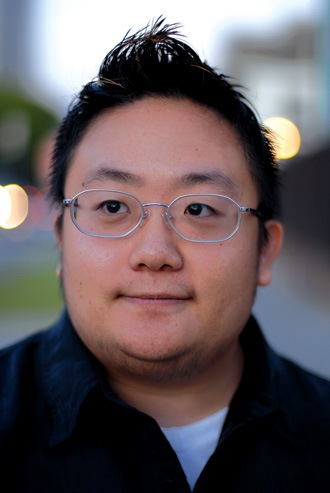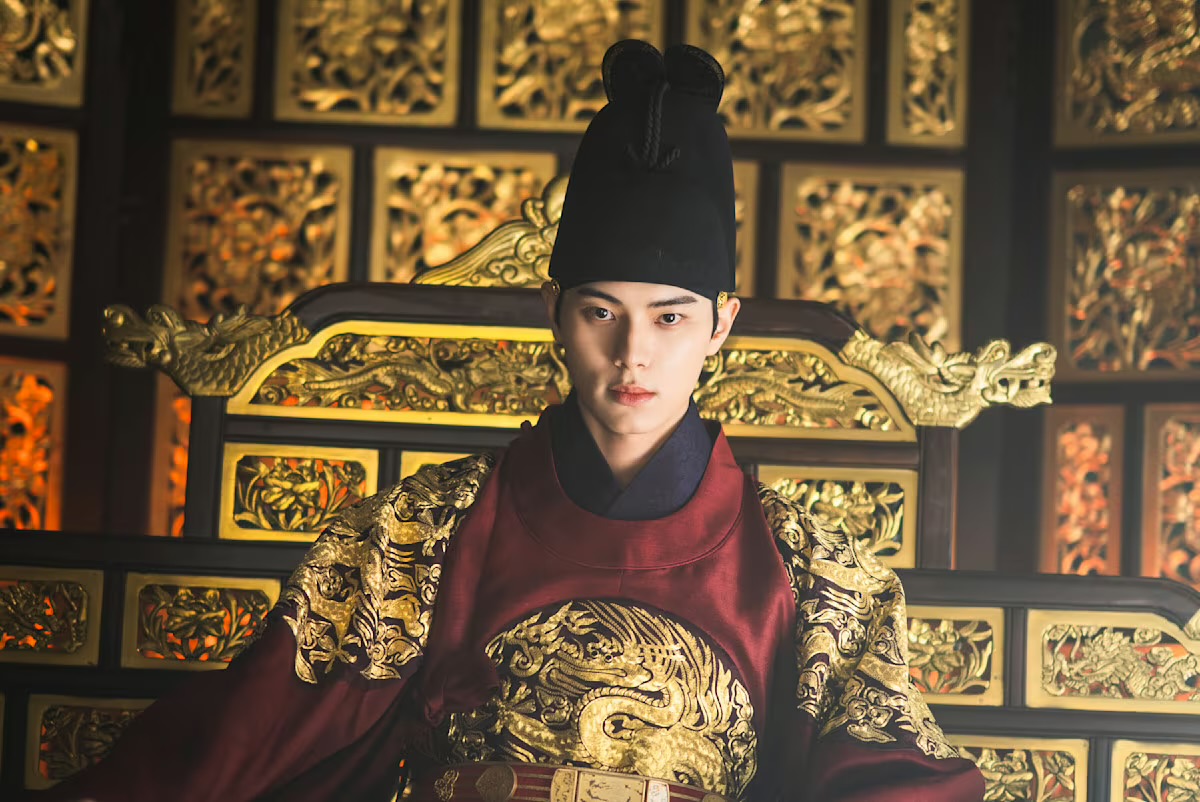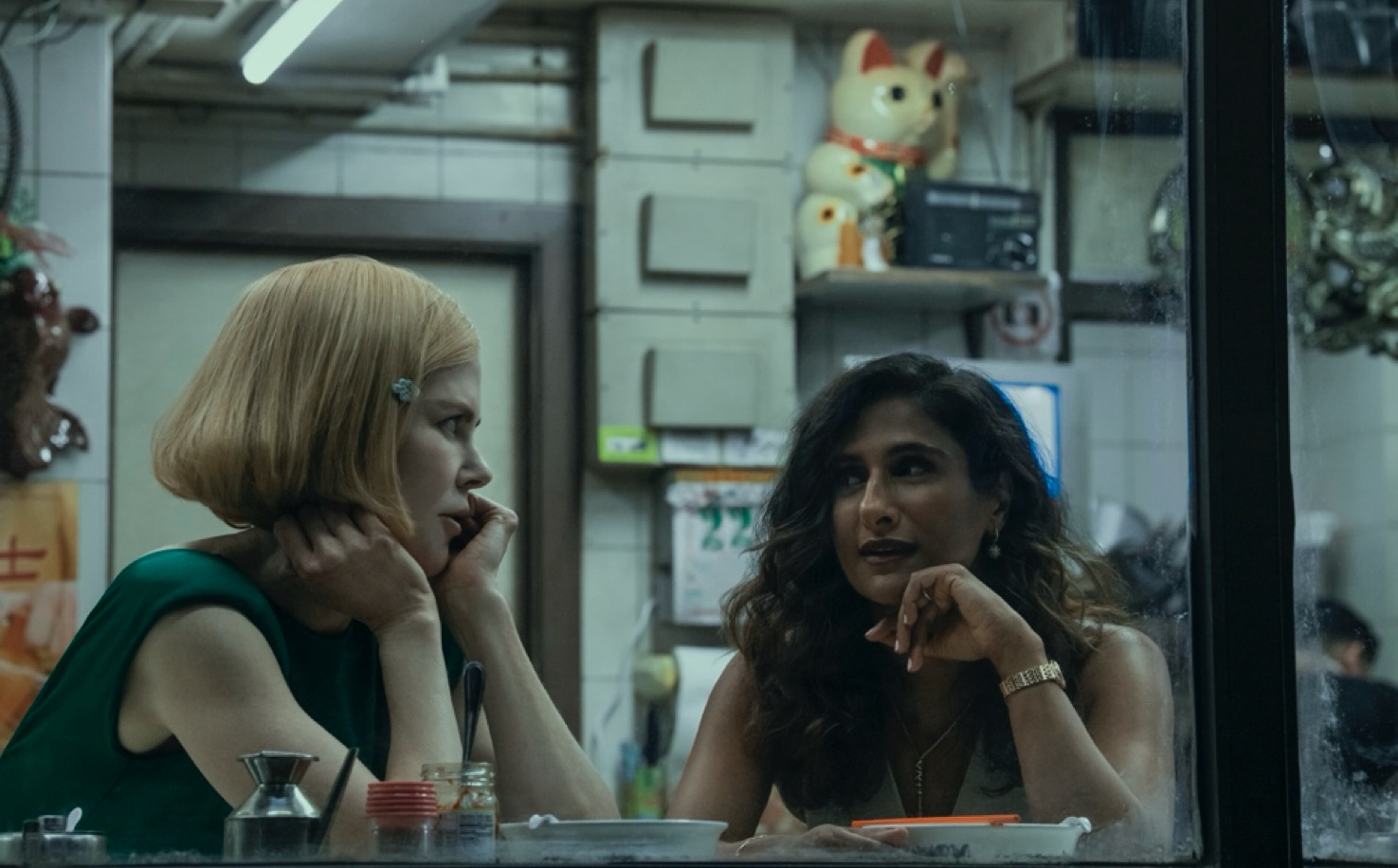By Michelle Woo
Photographs by Eric Sueyoshi
At a boba shop in Los Angeles, Alexander Yoo sits with his green milk tea. He’s wearing a short-sleeve collared shirt and khakis. His black messenger bag is propped against the table stand.
He speaks about himself openly, like he’s done this many times before. His father is Korean; his mother is Filipino. He recently celebrated his 30th birthday in Las Vegas. He’ll unabashedly belt Journey ballads at karaoke lounges. He loved Will Ferrell in “Blades of Glory.”
And, of course, there’s what we came to hear: a descriptor that Yoo hopes will one day be as easy for the world to digest as any other.
He used to be a woman.
Yoo identifies as transgender, an umbrella term that refers to people whose gender identity differs from conventional expectations of what it means to be male or female. It includes those who have gone through sex reassignment surgery or hormone treatments. It applies to cross-dressers, those with ambiguous genitalia and those who switch between gender identities. For many in this small community, their journeys to crossing the gender divide have been filled with frustration, shame and silence.
While the mainstream media has turned a spotlight on transgender issues, with recent stories of a transgender politician, a police commission president, a sports columnist and a prom queen, most Korean American transgender people continue to live unseen. In a culture where gender roles are rigid and issues surrounding sexuality remain taboo, they find themselves marginalized within a minority.
“In Asian American communities, there is a code of silence around LGBT (lesbian, gay, bisexual and transgender) issues, especially transgender issues,” says Cecilia Chung, deputy director of the San Francisco-based Transgender Law Center and a transgender woman herself. “There’s added shame, guilt and negative stereotypes. With male-to-female transgender people, there’s the whole idea of losing the family name.”
Yet, across the nation, Korean American transgender people are slowly emerging from the shadows, sharing their struggles and seeking support. Stepping beyond family and social stigmas, they tell their stories — whether or not people are ready to listen.
“Those Are For Girls”
Growing up as a child in Los Angeles, Yoo, who went by his Korean name (many transgender people don’t wish to disclose their former names), considered himself a typical Asian overachiever. His parents were both doctors and were deeply rooted in the conservative Christian church. He went to Korean school every Saturday morning. He prayed to God every night.
Yoo looked like the other girls. He went through a floral dress phase, a preppy phase and a “perfect curls phase.” (“God, my hair took so much time. But I looked good,” he recalls.) In old scrapbooks, there are photographs of the young girl trying on her mother’s lipstick. He loved the color pink.
“I know it doesn’t sound at all like a typical textbook narrative,” says Yoo, now the founder and president of GenderQueer Revolution, a Los Angeles-based organization exploring gender and sexuality. “Sure, you hear stories where a [transgender person] says, ‘When I was a kid, I was playing with trucks.’ But that’s not me.”
The transgender journey is a complex one. Transgender men weren’t necessarily tomboys and transgender women didn’t always play with dolls. And gender identity is separate from sexual orientation. Transgender people can be gay.
The National Center for Transgender Equality estimates that there are as many as 3 million transgender people in the U.S., though numbers for the Asian American population are difficult to find.
No one really knows why some people are transgender, although many experts believe it is a biological phenomenon. According to the American Psychiatric Association, the diagnostic category is called Gender Identity Disorder (GID), but many transgender people find this label offensive, stating they don’t wish to be classified as mentally ill.
For Pauline Park, a male-to-female transgender person in New York, the thoughts began on the first day of kindergarten. All the girls in class were wearing stretch pants with stirrups and, as a 4-year-old boy, he wanted to wear them, too. When he got home, he asked his mother if she would buy him a pair.
“No,” she said, startled at the question. “Those are for girls.”
“At that moment I realized that there was a sex-gender binary,” Park says. “Somehow, I was assigned to the other side of the fence.”
Park, a Korean adoptee raised in Milwaukee, said that as a child, although she would occasionally sneak into her mother’s closet to try on her clothes, she realized she couldn’t be her true self until she was an adult. In junior high, she spent her afternoons at the local library reading books on homosexuality and one on transgender issues, titled “Transvestite and Transsexuals.” At night, she would have a recurring dream: she was alone in a women’s department store and could try on all the clothes she wanted.
At 16, Park came out as gay, but says she knew this identity was an incomplete one. She wanted to be a woman.
“What The Hell Is Happening To Me?”
Yoo’s “transition” began during his senior year in college, when he began piecing together clues from his past. As a teenager, he remembered having crushes on girls. When he watched the 1999 film “Boys Don’t Cry,” about a transgender teen, he remembered heaving and sobbing like he never had before. He questioned everything, from his sexuality to his spirituality to his existence. He felt lost.
“These epiphanies came fast and furiously like a flash of lightening,” Yoo says. “It was like one day, I thought, ‘Oh my God, I don’t think I’m straight and I don’t think I’m female. What the hell is happening to me?’ It’s like all your life you think you know who you are, then you find out you’re adopted. But it’s worse than that. It’s very crippling, very traumatic.”
Like many of today’s transgender people, Yoo scoured the Internet in seek of support. He sought out gay and transgender coming- out groups in his area. Eventually, he cut his hair short and changed his name. At church, people talked behind his back. Friends who he hoped would stick by him thought his “issues” were too big to deal with.
“There was a lot of having to say goodbye,” Yoo says. “Every time people refused to see me as human or said, ‘You’ll grow out of it,’ or referred to me with the wrong pronoun, it was like a knife to the heart.” Yoo also had to address his feelings spiritually. “I was very afraid that God hated me. I couldn’t believe that God could still look at my face.”
“We Need To Fix You”
After lying on a hospital bed in the ER, Theresa Cho knew she needed to tell her parents the truth.
Their only son was living as a woman.
As a teenager in Los Angeles, she had ordered the hormone pills through the Internet. Some male-to-female transgender people take them to develop breasts, softer skin and other feminine traits.
But she started getting repeatedly sick and one day, found herself nauseous and coughing so much that she couldn’t breathe. Later, in a follow-up visit, her doctor urged her to confess to her parents about the pills.
Growing up, Cho always had sort of an androgynous look. Some Asian American male-to-female transgender people say they’ve been told they are “lucky” to have softer, more feminine features.
In her early teens, Cho, who says she “always knew” she was transgender, would dress like a boy in front of her parents and then sneak out with girls clothing when she left the house. One time, they caught her, but brushed it off as a phase.
“They thought I was doing it to cause some grief,” says Cho, who is now 24 and lives in Irvine, Calif.
But after the incident at the hospital, their worries grew.
“They would say things like, ‘Where did we raise you wrong? We need to fix you,’” Cho says.
Belinda Dronkers-Laureta, coordinator of San Francisco-based API Family Pride, an organization that helps Asian Americans in the LGBT community find support within their families, says that for Asian parents, especially those who are immigrants, the road to understanding and acceptance is different than for parents from Western cultures.
“The Western approach is to put parents into something like an AA meeting,” Dronkers-Laureta says. “There’s a group of people and you say something like, ‘Hi, I have this issue.’ That mode doesn’t work with Asian Americans. They don’t want to disclose personal issues to people they don’t know. They don’t even want their own communities to know.”
Her organization aims to help Asian families ease into the process through one-on-one counseling sessions and educational coming-out videos that they can watch in the privacy of their own homes.
Last year, Cho sat down with her mom and, for the first time, talked to her about her life as a transgender person.
“[My parents] realized this isn’t something that they can stop,” says Cho, who is now engaged to a man. “My dad is still not completely on board with me. My parents wanted a son. That was a big thing for them. They wanted grandkids with their name. But my mom has changed, especially after college. She said, ‘I realized that it’s more important that you’re happy.’”
“I Wanted To Make The Decision For Me”
Earlier this year, Cho decided to undergo sex reassignment surgery. She had been thinking about it for several years.
She traveled to Thailand, which is believed to have the largest number of male-to-female transgender people per capita in the world. The procedure cost about $15,000. She says she’s happy with the results.
Cho had always been a big fan of Harisu, a male-to-female transgender pop star in Korea, who went through the surgery in the ’90s. Last month, the 32-year-old singer and actress got married.
“I knew her mom wasn’t accepting of her either,” Cho says, “so I looked up to her a lot. It was hard to find a trans role model. Finding one who was Korean was a big deal for me.”
For transgender people who choose to make a physical transition, there are many possibilities, from pills and patches to injections and surgeries. In 2002, Yoo decided to do hormone replacement therapy, which, for female-to-male transgender people, can result in facial hair, a deeper voice, an ending of the menstrual cycle, a shrinking of the breasts and a higher sex drive. Possible side effects include acne, body odor, increased aggressiveness and a heightened risk of cancer and heart problems.
“I really wanted to make the decision for me,” Yoo says. “I didn’t want to do it based on insecurities, or because people were looking at me funny. I know who I am, and who I am is OK.”
When he started getting injections, he noticed some changes immediately. His voice started to drop within a couple of days. Later, he felt sideburns and chin hair growing in. For Yoo, it was exciting. “I’m Asian, so each hair was treasured,” Yoo says with a laugh.
“I Found My Peoples”
Park first began dressing in public as a woman in her early 20s, when she was studying abroad in London. “It was really one of the most liberating experiences,” says Park, who does not feel the need to alter her body to claim her female identity.
Today, Park is the co-founder of the New York Association of Gender Rights Advocacy (NYAGRA), the first statewide transgender advocacy organization in New York. She has led campaigns for transgender rights. Issues facing transgender people nationwide include hate crimes, a lack of employment opportunities and legal issues in regards to marriage.
A study released last month by the National Gay and Lesbian Task Force Policy Institute estimates that 69 percent of Asian American transgender people have experienced discrimination due to their transitions.
Most transgender people have found that, in light of the fear and suffering, the coming out experience has given them confidence and hope. After hearing the stories at a transgender support group, Yoo sent a text message to a friend: “I found my peoples.”
For Yoo, the past years have been bittersweet. His parents are still in denial that they’ve lost the daughter they once had, and will make up stories about him when anyone asks. His father is now a pastor. Yoo says he’s not waiting for his parents to accept him. “That’s a pipe dream,” he says. “There’s very little hope.” Today, Yoo works as a psychotherapist and educator, with a focus on LGBT issues. He has found a church that accepts him.
Yoo cherishes the few friends who have stood by him through his transition. One, in particular, is a woman he met in seventh grade.
“She doesn’t understand everything,” says Yoo, who recently celebrated his “T” Day, marking five years since he began testosterone treatments.
“She doesn’t understand why I am the way I am. But she is still able to accept me. She says, ‘God made you this way. You are who you are. And I love you for who you are.’ There are lots of people who love me and see me as more than my body. I am blessed.”
The Dari Project
While growing up in a suburb outside of Pittsburgh, Stephen Kang’s world largely revolved around his church, which, like many churches, served as the social center for the Korean American community. However, the place that gave him comfort as a child would later become a source of pain. As a gay man, he was deemed a sinner, and his parents felt alienated by the congregation.
“My mom said she couldn’t talk about it with her friends,” recalls Kang. “It just really broke my heart. It made me want to do something about it. It’s not enough for individuals to come out, we also have to take care of our families.”
In 2005, Kang along with a handful of other queer activists formed The Dari Project, an effort to develop resources to increase awareness and acceptance of lesbian, gay, bisexual and transgender people of Korean descent.
The mission is to “provide hope, support and a sense of community for our families, our friends, and our church communities — the general people in our lives who whisper and make comments about how ‘they don’t understand us,’” says co-founder Un Jung Lim.
“With a lot of queer Koreans who are able to come out [of the closet], it’s usually to non-Koreans. Even as I was coming out, the only thing I could tell my mom in Korean was that I liked women. She didn’t understand what that meant, and her response was, ‘Well, I like women, too.’”
For now, members of The Dari (translated as “bridge” or “leg” in Korean) Project are compiling stories for a bilingual publication that documents the lives of LGBT Korean Americans. They also aim to provide a supportive space for queer KAs and their families and have spoken at student conferences. In addition, they have launched a Web site (www.dariproject.org) to provide information and support for both the larger Korean American community as well as queer KAs.
Member John Won stresses the importance of having a Korean-specific queer organization, and says queer KAs often compartmentalize their lives into the “gay” life and the “Korean” life.
“It’s like you can’t be your whole self at any time, but both these identities affect us simultaneously,” he says.
“With queer Koreans, we find ways to define dialogue and find connections with each other. It’s this particular experience with our families, remembering and recuperating cultural identity and addressing the need to take care of our parents that unites us. Whether we share a history or even something simple as food, there is a connection.”
— Chong-suk Han
Eye On The Media
GLAAD’s Andy Marra works to deepen awareness of the KA transgender community
When Korean American transgender people decide to make their stories public, Andy Marra helps them find a voice.
Part of her role as GLAAD’s (Gay & Lesbian Alliance Against Defamation) API media strategist includes connecting media professionals with the Asian American LGBT community with the goal of increasing public awareness and eliminating stereotypes. She also tracks and analyzes the media’s coverage of the Asian American LGBT community, presenting its progress and setbacks on the GLAAD Web site (www.glaad.org).
“There is an increasing interest by Asian Pacific Islander media in capturing the lives and experiences of LGBT people,” says Marra, a Korean American transgender woman herself.
“Korean media is of no exception and has shown growth in its LGBT coverage by profiling the famous transgender female singer Harisu or reporting on the historic film, ‘The King and the Clown’ (which features a 16th century transgender clown). These stories and more like them will only deepen the awareness and understanding of LGBT people within the larger Korean community.”
Marra says that although the media has made strides in recent years, it continues to leave Asian American LGBT voices out of the picture. With Marra’s efforts, perhaps someday, her job will no longer be needed.
Asian American Transgender Resources
Boston
Queer Asian Pacific Alliance (QAPA)
(617) 499-9531
www.qapa.org
California Bay Area
API Family Pride
(510) 818-0887
www.apifamilypride.org
Asian Pacific Islander Queer Woman & Transgender Coalition (APIQWTC)
(415) 292-3420, ext. 513
www.apiqwtc.org
Los Angeles
GenderQueer Revolution
(310) 736-6376
www.genderqueerrevolution.org
Satrang
(213) 479-5076
www.satrang.org
New York
Gay Asian & Pacific Islander Men of New York (GAPIMNY)
(212) 802-7423
www.gapimny.org
New York Association for Gender Rights Advocacy (NYAGRA)
(212) 675-3288, ext. 338
www.nyagra.com
The Dari Project
(718) 618-4763
www.dariproject.org






